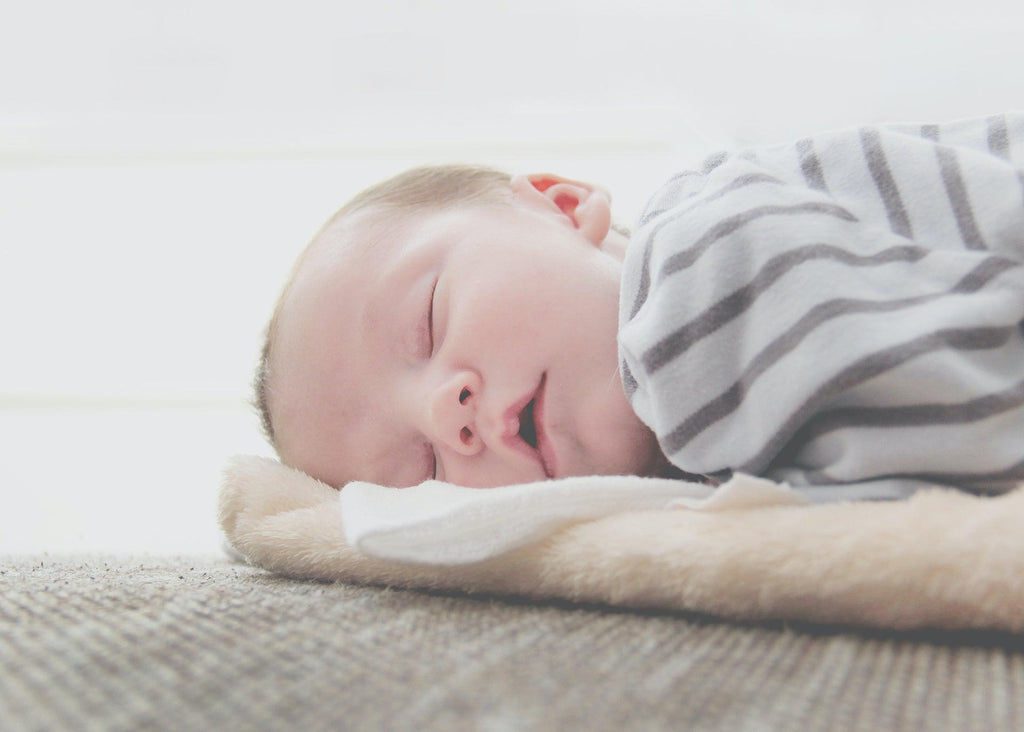How Soon Will I Know If My Baby Has Dimples?: Unveiling the Genetic Mystery
You will begin to notice if your baby has dimples around six months of age. Dimples in babies are caused by the accumulation of fat in their cheeks, and as they grow and lose facial fat, the dimples may disappear.
In some cases, children may not have dimples at birth but develop them later in childhood. Dimples are a genetic trait that can be inherited from both parents, and they typically do not disappear completely but may become less noticeable with age or weight loss.

Credit: brightside.me
Understanding The Genetic Basis Of Dimples
Babies with dimples may show them as early as newborns due to the accumulation of baby fat in their cheeks. However, dimples can also develop later in childhood. The appearance of dimples is a genetic trait and varies from baby to baby.
Explanation Of The Genetic Factors That Contribute To The Formation Of Dimples In Babies
Have you ever wondered why some babies are born with adorable dimples while others aren’t? The formation of dimples in babies is influenced by a combination of genetic factors. Dimples are small indentations that can be found on the skin, particularly on the cheeks, chin, and lower back. Cheek dimples, in particular, can be found on the sides of the mouth.
Role Of Specific Genes In Dimple Formation
Scientists believe that the presence of dimples is a genetic trait, although the exact mechanisms of inheritance are not fully understood. It is thought that specific genes contribute to the development of dimples. These genes affect the underlying muscle structure, resulting in the characteristic indentations on the skin.
While the genes responsible for dimples haven’t been pinpointed definitively, research suggests that a single gene variant may be involved in the formation of cheek dimples. However, it’s also possible that multiple genes contribute to dimple formation, making it a complex and fascinating genetic trait.
How Dimples Are Inherited From Parents
The inheritance pattern of dimples can vary, but it is generally believed to follow a dominant genetic pattern. This means that if one parent has dimples, there is a higher chance their child will inherit them as well.
If both parents have dimples, the likelihood of their child having dimples increases even further. However, it’s important to note that not all children of parents with dimples will have dimples themselves. Genetic traits can be inherited in unpredictable ways, so the presence or absence of dimples in a baby cannot be guaranteed based solely on the parents’ characteristics.
Additionally, it’s worth mentioning that dimples may not be present at birth and can appear later in childhood as the baby’s facial fat changes. Dimples typically start to become more noticeable around six months of age, although the exact timing can vary from baby to baby.
Conclusion
Understanding the genetic basis of dimples can help explain why some babies are blessed with these adorable facial features. While the exact genetic mechanisms are not fully understood, it is believed that certain genes play a role in the formation of dimples. The inheritance of dimples from parents is also influenced by genetic patterns, although it is important to note that not all children of parents with dimples will have dimples themselves.
When Do Dimples Typically Appear In Babies?
Dimples in babies are undeniably adorable. Those cute little indentations on their cheeks can melt anyone’s heart. But have you ever wondered when exactly your baby’s dimples will make their grand appearance? In this article, we will explore the timeline for the emergence of dimples in newborns, factors influencing the timing of dimple formation, and variations in the appearance of dimples among babies.
The Timeline For The Emergence Of Dimples In Newborns
Every baby develops at their own pace, and the timing of dimple formation is no exception. Typically, dimples start to appear in babies around six months of age. However, it’s important to note that this timeline can vary widely from baby to baby. Some infants may show off their dimples a bit earlier, while others might take a little longer to develop them.
Factors Influencing The Timing Of Dimple Formation
Several factors can influence when your baby’s dimples will appear. One of the main factors is genetics. Dimples are often considered a genetic trait, meaning they can be inherited from one or both parents. So, if you or your partner have dimples, there’s a good chance your baby may develop them as well.
Additionally, the amount of baby fat in your little one’s cheeks can impact the visibility of dimples. As babies grow and their facial fat diminishes, their dimples may become more prominent. Therefore, the timing of dimple formation can be influenced by the gradual reduction of baby fat.
Variations In The Appearance Of Dimples Among Babies
Just like every baby is unique, the appearance of dimples can also vary. Some babies may have deep, well-defined dimples, while others may have shallower indentations. The location of the dimples can also differ, with some babies having them on their cheeks, chin, and even lower back.
It’s important to remember that not all babies are born with dimples. Some babies may develop them later in childhood or may not have them at all. Each baby is special in their own way, and whether or not they have dimples doesn’t diminish their cuteness in any way.
In conclusion, the emergence of dimples in babies is an adorable and exciting milestone. While the timing may vary, around six months of age is a common timeframe for dimples to appear. Factors such as genetics and baby fat can influence the timing and appearance of these delightful cheek indentations. Embrace your baby’s unique features, whether they have dimples or not, and cherish every moment of their adorable journey.
Signs To Look Out For To Determine If Your Baby Has Dimples
Babies typically start showing signs of dimples around six months of age, although it can vary. These cute facial indentations are caused by the accumulation of fat in their cheeks and may disappear as they grow older. Some children may not have dimples at birth but develop them later in childhood.
Identifying Subtle Dimples In Newborns
When it comes to determining if your baby has dimples, it’s important to keep an eye out for certain signs. Even though dimples are typically associated with chubby-cheeked babies, they may not always be immediately noticeable in newborns. However, there are some subtle indications that can help you identify whether your little one has those adorable indentations.
One of the signs to look out for is a slight depression or indentation on your baby’s cheek when they smile or make certain facial expressions. It may appear as a small crease or fold in their skin. While these subtle dimples may not be as prominent as larger ones, they can still be an early indication that your baby is blessed with this charming feature.
How To Differentiate Between Natural Dimples And Temporary Indentations
It’s important to note that not all indentations on your baby’s cheeks are actual dimples. Some of them could be temporary indentations caused by compression or pressure. These temporary marks typically disappear quickly and don’t persist when your baby’s face is at rest.
On the other hand, natural dimples tend to be more permanent and are present even when your baby’s face is relaxed. They usually form due to variations in the underlying muscles and skin structure. If you notice that the indentations remain even when your baby’s face is at rest, there’s a high probability that they are genuine dimples. This can provide reassurance that your little one has inherited this adorable trait.
Recognizing The Presence Of Dimples As Your Baby Grows
As your baby grows, their dimples may become more prominent and noticeable. While newborn dimples may be subtle and delicate, they can deepen and become more defined with time. This is especially true as your baby’s facial muscles develop and their face continues to change.
You may also observe that the presence of dimples becomes more apparent when your baby smiles or laughs. The way their facial muscles contract and relax can emphasize the adorable indentations, making them even more noticeable and endearing.
It’s important to keep in mind that the appearance of dimples can vary widely from baby to baby. Some may have deep and unmistakable dimples, while others may have more subtle and delicate ones. Regardless of the size or prominence, these charming features can bring joy to your heart and a smile to your face every time you see them.
Can Dimples Develop Later In Childhood?
When it comes to babies, their adorable features often capture our hearts and dimples are no exception. While some newborns may have dimples from birth, it is not uncommon for babies to develop them later in childhood. In this article, we will explore the possibility of dimple development in babies who did not have dimples at birth, the factors that may influence their appearance over time, and how to distinguish between genetic and acquired dimples.
Possibility Of Dimple Development In Babies Who Did Not Have Dimples At Birth
It’s important to note that dimples result from the underlying muscle structure and are believed to be a genetic trait. While many babies are born with dimples, some may not have them initially but can develop them as they grow older. The appearance of dimples in babies who did not have them at birth is not uncommon and can be quite enchanting.
Factors That May Influence The Appearance Of Dimples Over Time
Several factors can influence the development of dimples in babies over time. One significant factor is the loss of baby fat in their cheeks as they go through the natural process of growing up. As babies grow, their facial fat diminishes, and this reduction can lead to a more noticeable appearance of dimples.
Additionally, genetics play a crucial role in determining whether a baby will have dimples or not. If one or both parents have dimples, there is a higher chance that their baby may inherit and develop dimples as well. However, it is also important to note that genetics can be complex, and dimples may skip generations or not appear at all, even if both parents have dimples.
Distinguishing Between Genetic Dimples And Acquired Dimples
When determining whether a baby’s dimples are genetic or acquired, certain characteristics can help differentiate between the two. Genetic dimples are usually present from birth or appear early on in childhood, while acquired dimples develop later in childhood due to the loss of facial fat.
Genetic dimples tend to be consistent and symmetrical, appearing on both cheeks in the same location. On the other hand, acquired dimples can be asymmetrical and may appear on one cheek only. By observing the development and symmetry of the dimples, it is possible to distinguish between genetic and acquired dimples.
In conclusion, while some babies may have dimples from birth, it is possible for dimples to develop later in childhood. Factors such as the loss of facial fat and genetics can influence the appearance of dimples over time, and understanding the difference between genetic and acquired dimples can help identify their origin. So, if you’re eagerly awaiting the appearance of adorable dimples on your baby’s cheeks, don’t lose hope as they may yet make their charming debut!
Embracing The Genetic Mystery Of Dimples In Babies
Discovering whether your baby has dimples is an exciting mystery that unfolds as they grow. Although dimples can appear at birth, it is more common for them to develop later in childhood as the baby’s facial fat changes. Keep an eye out as your little one grows and see if their cute dimples make an appearance!
Appreciating The Uniqueness Of Every Baby’s Genetic Makeup
Every baby is a beautiful combination of their parents’ genetic traits. While some babies may be born with dimples, others may develop them as they grow. It is important to appreciate the uniqueness of every baby’s genetic makeup and understand that dimples, just like other physical traits, are a result of complex genetic inheritance.
Parental genes play a significant role in determining whether or not a baby will have dimples. If one or both parents have dimples, it increases the likelihood that their baby will have them too. However, the presence or absence of dimples cannot be guaranteed, as genetic traits can be inherited in a variety of ways.
Exploring The Broader Implications Of Genetic Traits In Children
Genetic traits in children go beyond just physical characteristics. They can also influence various aspects of their life, such as personality traits, susceptibility to certain diseases, and more. Exploring the broader implications of genetic traits can help parents gain a better understanding of their child and support their development.
It is fascinating to see how genetics shape our children and the traits that make them unique individuals. While dimples might seem like a small detail, they contribute to the overall beauty and charm of a child. Understanding the genetic mystery behind dimples can deepen our appreciation for the complexity of human genetics.
Celebrating The Beauty And Charm Of Dimples In Early Childhood
Dimples are often seen as adorable and endearing in early childhood. They can light up a baby’s face and bring joy to those around them. These small indentations on the cheeks or chin have a way of capturing our hearts and showcasing the innocence of infancy.
As parents, it is important to celebrate the beauty and charm of dimples in our children. Whether they have them from birth or develop them later, dimples are a reminder of the uniqueness and genetic diversity that exists within each child.
Let us cherish these delightful dimples, as they are a testament to the beauty and wonder of our children’s genetic makeup.
Frequently Asked Questions For How Soon Will I Know If My Baby Has Dimples
Do Dimples Show On Newborns?
Newborns can have dimples as they have baby fat in their cheeks. However, as they grow, their facial fat decreases and the dimples may disappear. Some children may also develop dimples later in childhood. Dimples are caused by the accumulation of fat in the cheeks and can be a genetic trait.
Will My Baby Have Dimples If I Do?
Babies may have dimples at birth due to facial fat accumulation, but they can disappear as they grow. Some children may develop dimples later in childhood. Dimples are a genetic trait that can be inherited from parents, but they do not appear suddenly later in life.
What Are The Signs Of Dimple?
Dimples are small indentations that can be found on your skin, particularly on the cheeks, chin, and lower back. They are likely a genetic trait, although the specifics of inheritance are still unclear. Infants may have dimples due to baby fat accumulation, but dimples can also appear later in childhood.
Dimples do not typically appear later in life and are a permanent trait.
Can Dimples Suddenly Appear?
Dimples are a genetic trait that usually do not suddenly appear later in life. They are caused by the underlying muscle structure and are usually present from birth or develop during childhood. Dimples can become less noticeable as a person ages or undergoes significant weight loss.
Conclusion
Dimples in babies are caused by the accumulation of baby fat in their cheeks. While some babies are born with dimples, others may develop them later in childhood. Dimples are a genetic trait that can be inherited from both parents.
However, dimples do not necessarily last a lifetime and may become less noticeable as the child ages or undergoes weight loss. So, if you’re eagerly waiting to see if your baby has dimples, remember that it may take some time for them to appear.








